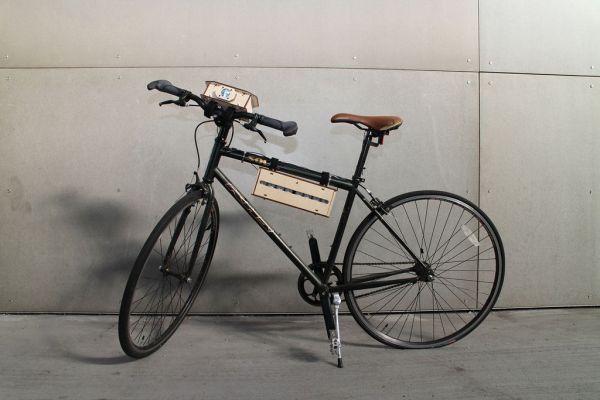In this Instructable I’ll show you how to make a electronic dashboard for a bicycle. We’ll be using an Arduino and a few off-the-shelf parts to create a system with light control and an LED speedometer.
Step 1: Materials
Arduino Micro (RadioShack #: 276-258)
12V 10W halogen bulb (RadioShack #: 272-011)
(2x) 12V lamp (RadioShack #: 272-336)
(6x) LED holder (RadioShack #: 276-080)
(3x) green LED (RadioShack #: 55050659) web only
(2x) yellow LED (RadioShack #: 276-021)
red LED (RadioShack #: 55050657) web only
1 uF capactior (RadioShack #: 55047769) web only
(6x) 330 ohm resistor (RadioShack #: 271-1315)
(4x) 10K ohm resistor (RadioShack #: 271-1126)
(3x) N-channel MOSFET (RadioShack #: 276-2072)
74HC14 Schmitt Trigger (RadioShack #: 55050984) web only
reed switch (RadioShack #: 55050593) web only
on/off toggle switch (RadioShack #: 275-602)
(2x) SPST toggle switch (RadioShack #: 275-612)
(6x) terminal block (RadioShack #: 55055598) web only
(2x) 4 cell D battery holder (RadioShack #: 270-396)
(8x) D battery (RadioShack #: 23-2220)
(16x) 8-32 x 5/8″ screw
(16x) 8-32 nut
(4x) 4-40 x 1/2″ screw
(4x) 4-40 x 1.5″ screw
(8x) 4-40 nut
~40″ double sided Velcro
zip ties
.2 inch plywood
Bicycle
Step 2: Build the Circuit: Schematic
The circuit is composed of five main parts:
Power: Eight 1.5V batteries in series will give us ~12V. This system is attached to a large SPST toggle switch for control.
Debouncer: The reed switch is connected across the capacitor of an RC circuit. The analog output is fed into a 74HC14 Hex Inverting Schmitt Trigger which converts it into a digital signal, which is then fed into Arduino Micro interrupt 1 (digital pin 2). This chip is powered by the 5V from the Arduino.
Speedometer: Six LEDs are attached via current limiting resistors directly to the digital output pins of the Arduino.
Lamp Control: Three lamps are connected to N-channel MOSFETs. Each MOSFET has a 10k pulldown resistor on its gate pin, which is control by a digital output pin.
More detail: Bike Dashboard


